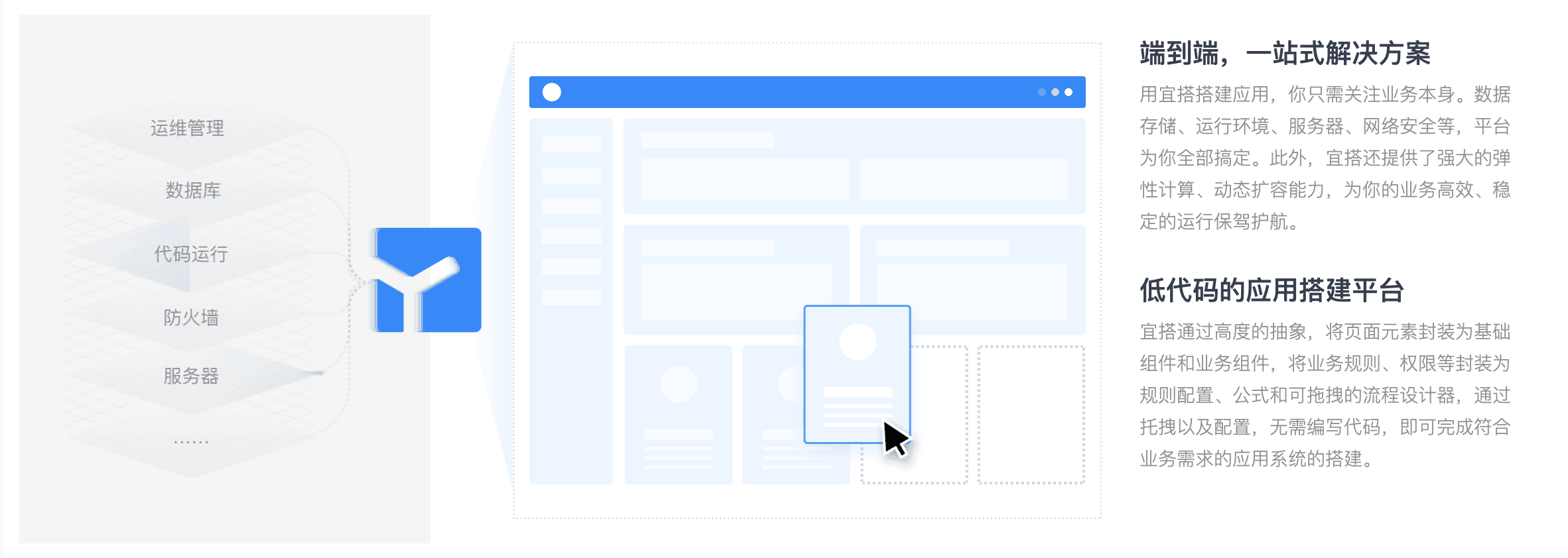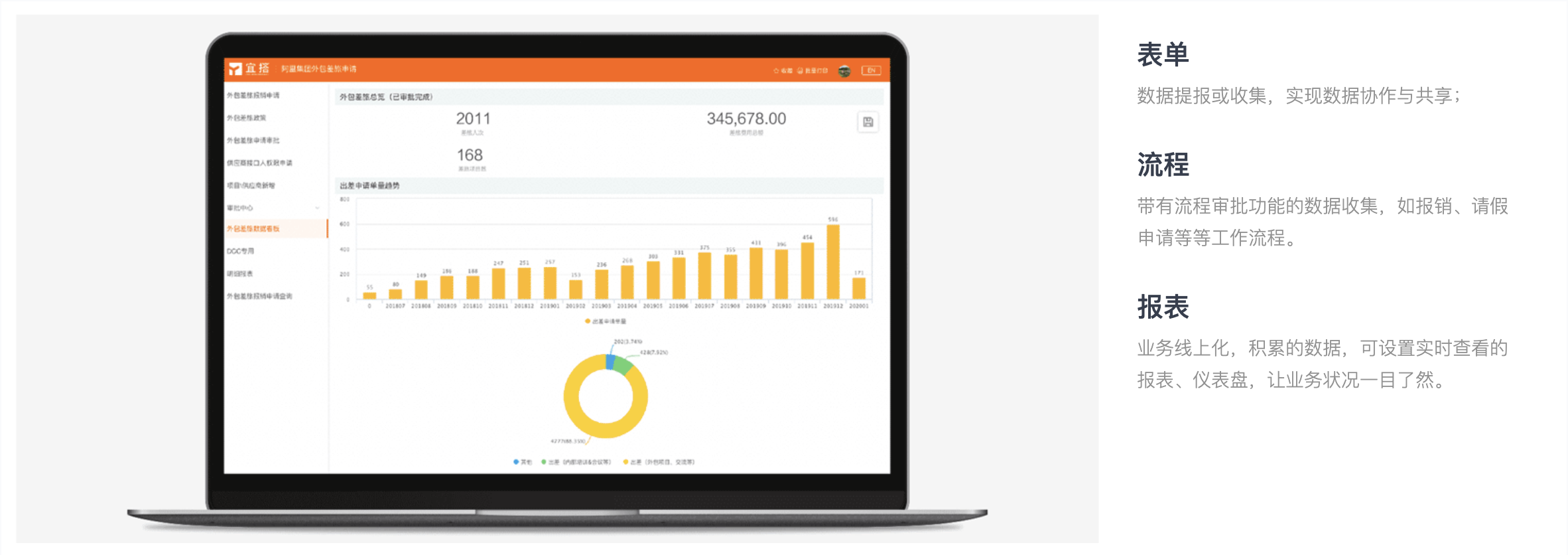What is YIDA
YIDA is a low-code application development platform independently developed by Alibaba. Based on Alibaba Cloud's cloud infrastructure and DingTalk of enterprise digital operating systems, it provides a low threshold for each organization, efficient Digital Business Application production model. Each application that is suitable for production naturally has the characteristics of interconnection, data drive, safety and reliability.
YIDA introduction
YIDA is highly flexible and adaptable, supporting a variety of application scenarios and business models, such as enterprise-level communications, project management, customer relationship management, and internal collaboration. In the process of application construction, YIDA also provides a variety of components and templates to quickly build high-quality and reliable applications.
YIDA has excellent scalability and maintainability. It can be seamlessly integrated with other Alibaba Cloud products to realize data sharing and collaborative office. YIDA also supports custom business processes and data fields to provide users with more flexible business process management and optimization solutions.
In the future, YIDA will continue to optimize product functions and performance to meet users' needs with more perfect and efficient digital business application solutions. At the same time, YIDA will actively explore and expand new application scenarios and business models to provide more choices and support for digital upgrading of enterprises.
Features
- Application visualization
YIDA provides a large number of graphical development components. Users can quickly build applications without code or a small amount of code by dragging and configuring them. Business personnel who do not understand code, such as HR and finance, can also become developers.

- Application Customization
Build applications that better meet business needs through forms, processes, and data capabilities to digitize everything around you.

- Integrate cloud native & nail native capabilities
Connect the underlying capabilities and technologies of Alibaba Cloud and DingTalk, connect the original Enterprise system with DingTalk, and reduce the threshold of enterprise digitalization.

The development of YIDA
- In March, 2017, it was officially launched in Alibaba on YIDA. In more than three years, more than 12700 applications were built internally, 99% of which were made up of HR, finance and other employees with no development experience built by themselves. According to statistics, these applications built with YIDA have saved Alibaba nearly 100000 person-days of resources.
- In YIDA 2019, it was officially used for foreign commercial use. In YIDA, it has served more than 6,000 customers, covering six major industries: New retail, medical treatment, manufacturing, energy, education and hotels.
- During the Spring Festival of 2020, YIDA helped governments and enterprises at all levels to quickly realize epidemic prevention and management with the advantages of low code and fast application construction, and built more than 2,000 epidemic applications in total, on average, each application takes only 1.5 days to go online.
- In January 2021, the DingTalk 6.0 conference officially announced the integration of YIDA and DingTalk, making it easier for 17 million organizations and 0.4 billion users on DingTalk to build nail native applications, for every enterprise, every functional department, each role provides the platform capability to quickly build applications so that everything at work can be digitized.
- In October 2021, at the low code sub-forum of the 2021 Yunqi Conference, Ye Shun, a senior technical expert of Alibaba (Huasheng Xiaoyong), released version DingTalk YIDA 3.0 on DingTalk, focusing on easy connection, cool data, safer. The number of low code applications on DingTalk exceeded 1.2 million, among which the number of suitable applications exceeded 1 million. Low code enabled more and more enterprises and organizations to find efficient and low-cost digital innovation paths, it also satisfies individual needs and makes individuals feel more acquired.
Why use YIDA
In your daily work, do you feel that the following scenes are familiar
- What should I do if I spend a lot of time doing data statistics on Excel/paper forms, which is tedious and always makes mistakes?
- What should I do if I want to upgrade my business line but have no budget, no development, and no resources?
- The internal systems of the enterprise are independent of each other. What should I do if I want to break the "information Island?
- What should I do if my business is unique and I can't find ready-made software to be directly available?
- I want to express my business logic to software personnel, but software personnel have deviations from understanding to implementation. What should I do?
YIDA what to solve for you
As long as you are familiar with business processes and have the idea of building applications, on the YIDA platform, you can only master 0 code or a small amount of code to develop and customize your personalized applications.
- Through Visual drag and drop, the layout and settings of the application are completed. What you see is what you get.
- Through the conversational command line, the logical association of different modules in the application is completed to realize data Superfusion.
- The established approval flow is associated with DingTalk organizational structure, and the approver can also be customized to achieve refined management and paperless
- Provides a variety of association and jump configurations, free switching between data, and mutual verification, making applications easily gain powerful interaction capabilities.
- Multiple open paths (DingTalk built-in applications and browser web login), get rid of space and device restrictions, and greatly improve convenience.
- Industry Analysis, low code interpretation, and YIDA related videos
- YIDA application practices of Alibaba and various enterprises
YIDA learning route
You can learn about the YIDA low-code application platform step by referring to the following learning circuit diagram.